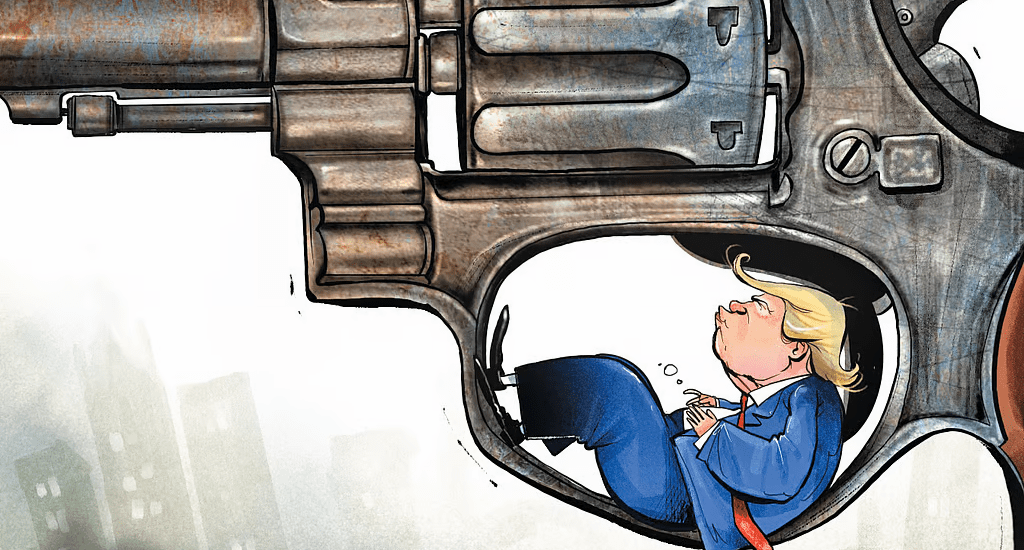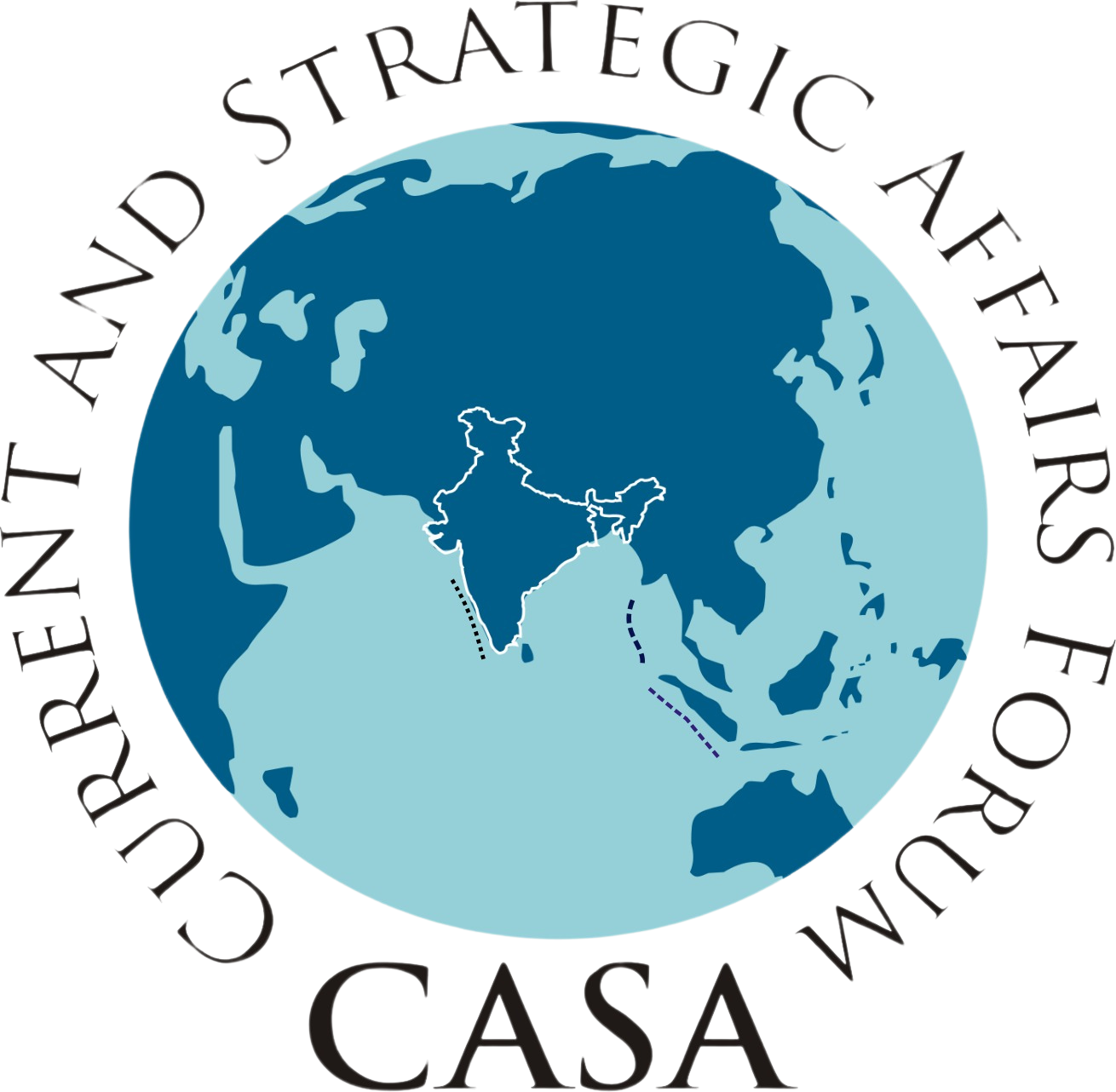Piercing the new curtain falling across the world
- May 5, 2025
- Posted by: Lt Gen Syed Ata Hasnain (Retd)
- Category: US

Cold War strategies like economic pressure, military deterrence & tougher competition may be back in play as Trump revises the geopolitical playbook. The Palestinian issue needs fresh ideas
Lt Gen Syed Ata Hasnain (Retd)
The speed at which US President Donald Trump has worked in the last 30 days has left even his strongest critics numbed in wonder. The most meaningful message that appears to have been conveyed is the notion of ‘no wars’. It resonates with the words of our own Prime Minister Narendra Modi to the Russian president on the sidelines of the Shanghai Cooperation Organization’s Tashkent summit, where he stated, “I know that today’s era is not an era of war.”
Trump’s worldview of strategic interests does not follow the traditional US perception of attempting to police the entire planet to secure it against several threats, many of which could be classified as imaginary.
At the end of the second world war, the US confronted the tide of communism. It invested heavily in the defence of Europe through the creation of the North Atlantic Treaty Organization or NATO, which it majorly funded, resourced and manned. It fought in Korea and Vietnam to prevent the march of ‘red ideology’ by acting as a bulwark, with both hard and soft power.
After the victory in the Cold War, many argued against persisting with NATO. Yet, confidence wasn’t as high as today and none could predict which way the former Warsaw Pact countries would go. NATO, under US stewardship, wanted to consolidate by absorbing maximum East European nations, and Russia was hardly in a state to protest. Most analysts agree that NATO perhaps went too far in attempting to secure its interests.
It was tolerable for a while. Romania, Bulgaria and Poland joining NATO was acceptable to Russia, but Ukraine was not—and a geography class could tell you why. The Black Sea region was the bone of contention. Russia would lose Sevastopol where its Black Sea fleet rested, and many of ethnically Russian-majority areas in the Donbas area.
Russia could not afford to lose control of the Black Sea, its only warm-water access. Besides, Ukraine was always a contended territory, with its transformational agriculture production, granaries, the gas pipelines through its territory, rare earth deposits and the precision ancillaries it manufactured. Normally, it’s the kind of nation no one would like to part company with. Vladmir Putin thought so too, and decided to resist the NATO thrust after being pushed to the hilt. The US and NATO backed Ukraine in a proxy war against Russia.
Trump thinks it was a waste of time and resources, and it’s far better to have a ‘live and let live’ approach with Russia. This essentially militates against the long-term US strategy of fully restricting Russia’s options towards Europe and West Asia.
In Trump’s belief, Russia will remain hamstrung with no aspirations towards Europe. If, at a later stage, Russia does acquire the economic and military muscle to aspire towards rebuilding its empire, NATO, without the US, would be the tripwire for a response, just as America responded in the past. Thus, Russia in full control of the parts of Donbas it has captured is an acceptable notion for him. He has to make it acceptable to the Ukrainians, too.
The hangover of countering the dominance of alternative ideologies, both communist and Islamist, is now finally receding from US threat perception. The intent of making America great again, even in spheres it had outsourced to the rest of the world, is gaining ground. How far correct Trump is and whether the risk he is taking is worth it will be realised much later. There is evident clarity that by looking inwards and not being obsessed about the role the nation plays worldwide as a geopolitical policeman, Trump is redefining the concept of power as we understand it in conventional terms.
In economic terms, he wants to bring manufacturing back to the US. He argues this will create jobs and reduce dependence on other countries, especially China. In the all-important national security segment, he believes that relying on other nations for essential goods like medical supplies or semiconductors makes the US vulnerable. By producing more domestically, he hopes to reduce the US’s trade deficit and keep wealth within the country, although this strategy will result in prices shooting up. It will be compensated by the much lesser expenditure on defence once the conflicts come to an end. He is vainly attempting to pass on this conviction to Europe while projecting minimal threat from Russia.
Advertisement
Not everyone believes in the worldview of the US president, because sooner than later, an ideological confrontation and fight for space will be inevitable. Yet, his approach to conflict termination in West Asia has been driven by a mix of pragmatism, economic interests and a focus on minimising US military involvement.
In his earlier avatar, he helped broker peace deals between Israel and several Arab nations as part of the Abraham Accords, aiming to shift the region towards economic cooperation. He pushed for a broader realignment in the region by encouraging some Arab nations to work with Israel. His view on ending conflicts in West Asia was based on withdrawing US troops to avoid direct intervention and employing sanctions and trade deals to effect change. To counterbalance Iran, he believed in alliances with Israel and some Gulf states.
Now, the major challenges that confront him are Gaza, the status of Palestine, and Israeli intransigence about Iran and its proxies. His talk of transporting Palestinians to other countries and reconstructing Gaza as leisure destination appears to be diversionary for the moment, since ideas are limited and the chances of renewed conflict are real.
A domain where Trump has yet to even begin is a potential military confrontation with China. He is likely to work towards war avoidance and increased military deterrence while strengthening US ties with Taiwan. He could increase US naval presence in the South China Sea and push for the Quad—the US, India, Japan and Australia—to play a more proactive role in countering and deterring China. He will probably escalate economic warfare, pushing for more tariffs and other restrictions.
Analysts perceive that Trump’s approach to China would witness economic pressure, military deterrence and competition as the long-term strategies to contain it—all reflections of Cold War strategies the US employed against the former Soviet Union.
(Views are personal)
(atahasnain@gmail.com)
Lt Gen Syed Ata Hasnain (Retd) | Former Commander, Srinagar-based 15 Corps; Chancellor, Central University of Kashmir
